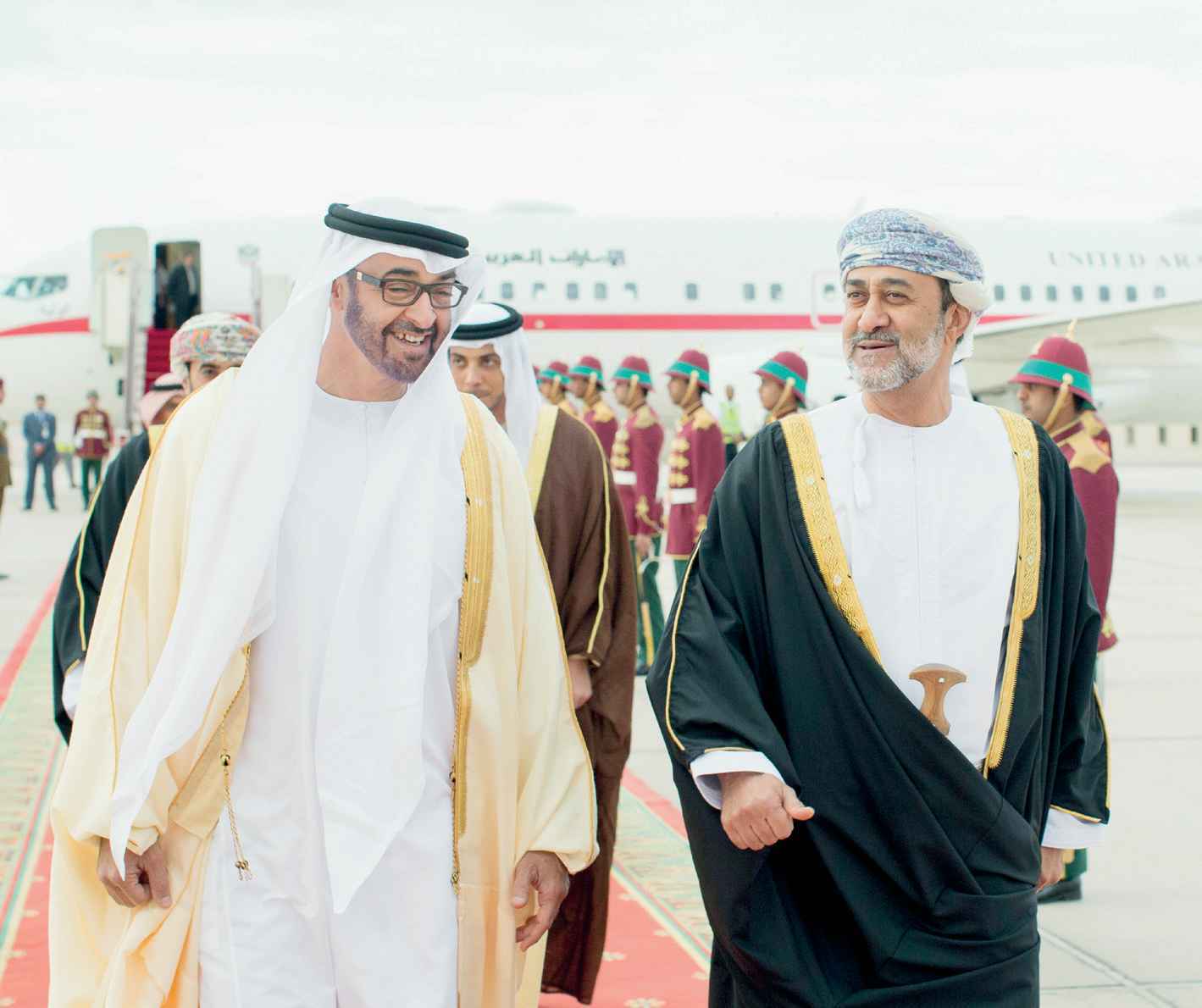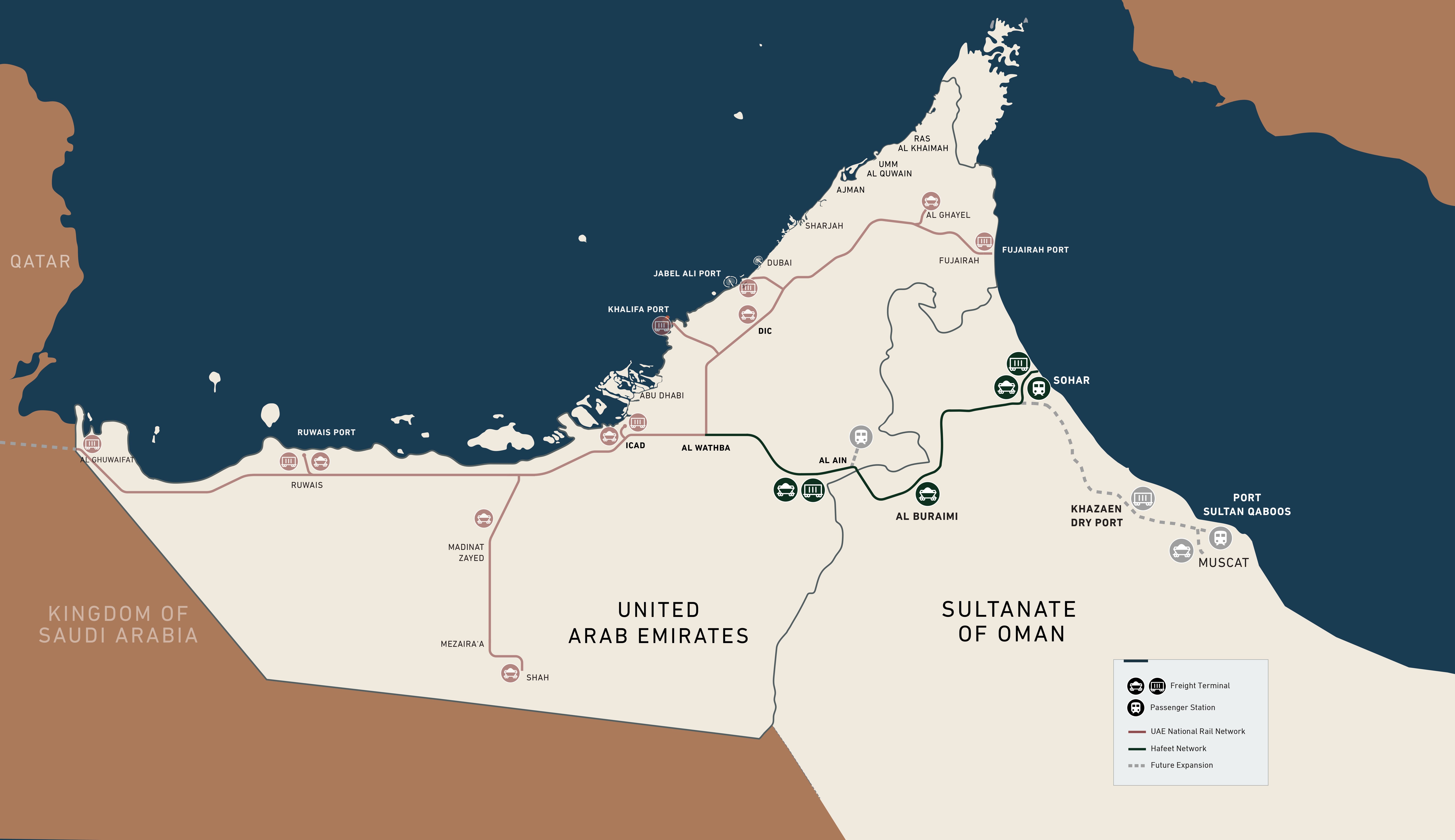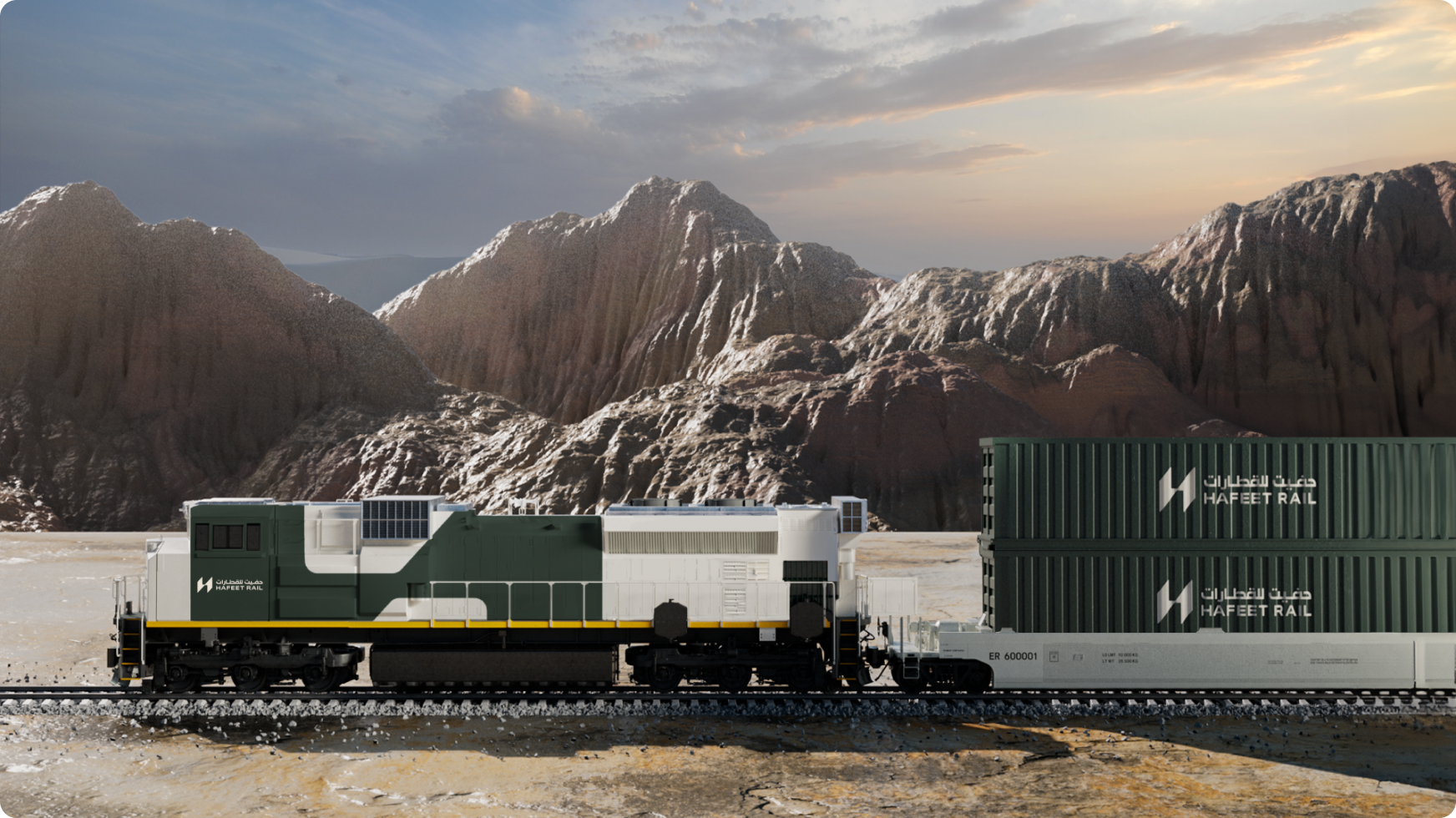
Guided by the visionary leadership of the United Arab Emirates and the Sultanate of Oman, the UAE-Oman railway network project marks a new era of progress and prosperity strengthening the historic relationship between the two countries.
By connecting Sohar to the UAE’s national rail network as Phase I of the project, this unified transport and logistics chain will span the region, delivering mutually beneficial socioeconomic and competitive advantages.

Route length
238km

A state-of-the-art infrastructure will support the rail network

Key Infrastructure Components
 2,500 Meters Long Tunnels
2,500 Meters Long Tunnels  36 Viaducts
36 Viaducts  21 Over-Bridges
21 Over-Bridges  39 Under-Passes
39 Under-Passes 881 Culverts
881 Culverts
 European Signaling System (ETCS Level 2)
European Signaling System (ETCS Level 2) Fiber Optics Connection
Fiber Optics Connection
Connectivity
 Connecting more than 12 passenger stations and cities across the two countries
Connecting more than 12 passenger stations and cities across the two countries Linking 5 major ports and more than 15 integrated freight facilities
Linking 5 major ports and more than 15 integrated freight facilities

Freight Train
Up to 120 km
15,000 Ton or 276 TEU per Trip

Passenger Train
Up to 200 km
350-400 Seating Capacity

Hafeet Rail – Empowering Sustainable Development and Economic Integration
The improved connectivity provided by the joint rail network will benefit local producers and manufacturers in both countries by giving them better access to larger markets, both domestically and internationally.
The joint rail network is an important addition to the regional logistics sector and will play a role in stimulating various industrial sectors and economic activities, by providing increased commercial and investment opportunities, supporting the integration of port activities and connecting them to regional and international markets, in addition to contributing to attract national and foreign investment.
The project is the first rail network of its kind to connect two Gulf states and represents a fundamental change in the transportation of goods in the region
Hafeet Rail will provide key benefits that will help to reduce costs, improve the efficiency and effectiveness of transportation and ensure that logistics services meet the needs of end users.
Frequently asked questions about the Hafeet Rail Project
The UAE-Oman railway network project is the first GCC link in a unified transport and logistics chain that will span the region, delivering mutually beneficial socioeconomic and competitive advantages. It primarily connects the capital of the UAE, Abu Dhabi, and Sohar Port in Oman. The project is a strategic partnership that will strengthen the regional logistics ecosystem by connecting industrial complexes in both countries to spur economic growth and enhance cross-border trade, while acting as a gateway to the main shipping routes between east and west.
Once fully operational, Hafeet Rail will unlock efficiency in passenger and freight movement. A single freight train journey on the network is further expected to transport more than 15,000 tonnes of cargo, or approximately 270 standard containers. Sectors expected to benefit from the network will range from mining, to iron and steel, agriculture and food, retail, e-commerce, and the petrochemical sector. Furthermore, the network is set to be at the forefront of passenger travel in the region, supporting tourism initiatives that make each country the first port of call for the other.
Hafeet Rail is a major infrastructure project designed to enhance passenger and freight movement between the two countries. It will reduce travel time, integrate with other modes of transport for last-mile delivery, and streamline border crossings, contributing to regional efficiency and development.
It will bolster trade and tourism by enhancing connectivity between the UAE, Oman, and the broader region. It strengthens the economic and cultural ties between the two countries, facilitating the movement of goods and people.
The new UAE-Oman railway network enhances regional cooperation and progress and enables people in both nations to realise their full potential by creating new prospects in the infrastructure, transport, and logistics industries, as well as providing a range of job opportunities and training programmes to nurture national talent.
Hafeet Rail is committed to environmental sustainability, making it a greener alternative to traditional transport methods. One of the primary environmental benefits is its lower carbon footprint compared to road and sea freight. By shifting more freight onto rail, the network will help reduce overall greenhouse gas emissions associated with transportation. Furthermore, the project includes future plans to incorporate green energy initiatives, such as the use of clean energy sources, to further enhance its sustainability. These measures align with broader goals to reduce environmental impact and promote eco-friendly transportation solutions.
The railway network will extend for 238km from Sohar Port in Oman to the Emirate of Abu Dhabi in the UAE. It will be connected to the UAE National Rail Network, and its terminals across the country.
Passenger trains will run at a top speed of 200 km/h, travelling between Sohar and Abu Dhabi in 100 minutes, and between Sohar and Al Ain in 47 minutes. Freight trains will operate at a maximum speed of 120 km/h.
Once fully operational, Hafeet Rail will unlock efficiency in passenger and freight movement by:
- Reducing travel time between both countries.
- Integrating with other modes of transport to ensure last-mile delivery.
- Unifying interoperability standards to facilitate seamless and efficient border crossings – from gauge and track to signalling and communications systems.
- Eliminating delays related to weather and traffic conditions.
The Hafeet Rail network provides substantial advantages for logistics by addressing both efficiency and cost-effectiveness. It is designed to significantly shorten transit times for goods traveling between Oman, the UAE, and beyond. This reduction in travel time is achieved by offering a faster alternative to traditional road and sea routes. Additionally, rail transport is inherently more economical for moving large volumes of goods. This is due to the cost efficiencies associated with rail compared to road transport, particularly when handling bulk shipments. The network will also introduce a reliable and fixed timetable for freight services, providing a level of consistency that road and sea transport may not always be able to guarantee. This ensures that businesses can depend on predictable delivery schedules, enhancing overall supply chain reliability.
Hafeet Rail is poised to make a positive impact on road traffic and safety. By providing a viable alternative to road transport for heavy freight, the rail network will reduce the number of trucks on highways. This reduction will contribute to improved road safety by lowering the risk of accidents involving heavy vehicles. Additionally, the shift of freight to rail will help alleviate congestion on busy highways, resulting in smoother traffic flow and reduced road congestion. This not only enhances safety but also improves the overall efficiency of road transport in the region.
Construction has officially launched on the joint railway network, and the company is currently working on establishing the expected timeline for the project to become operational.

